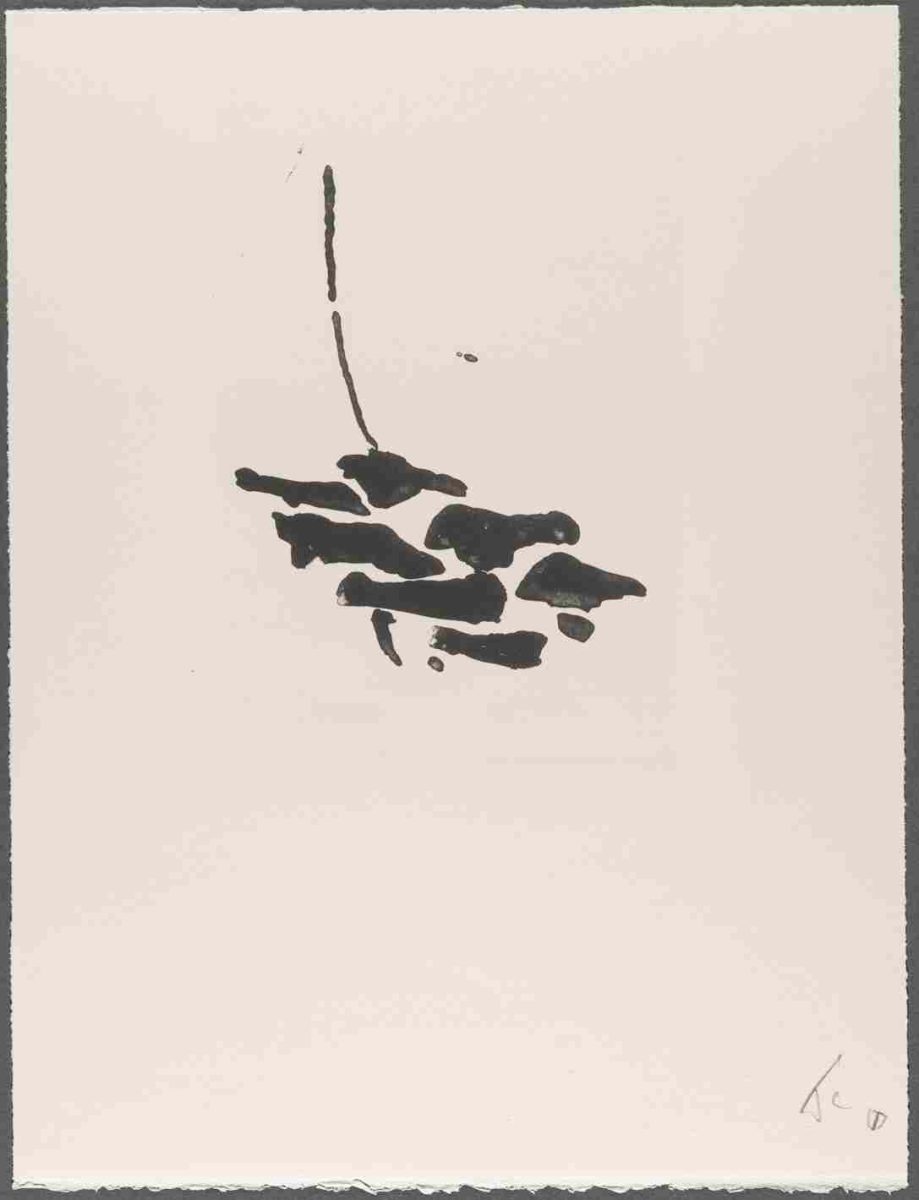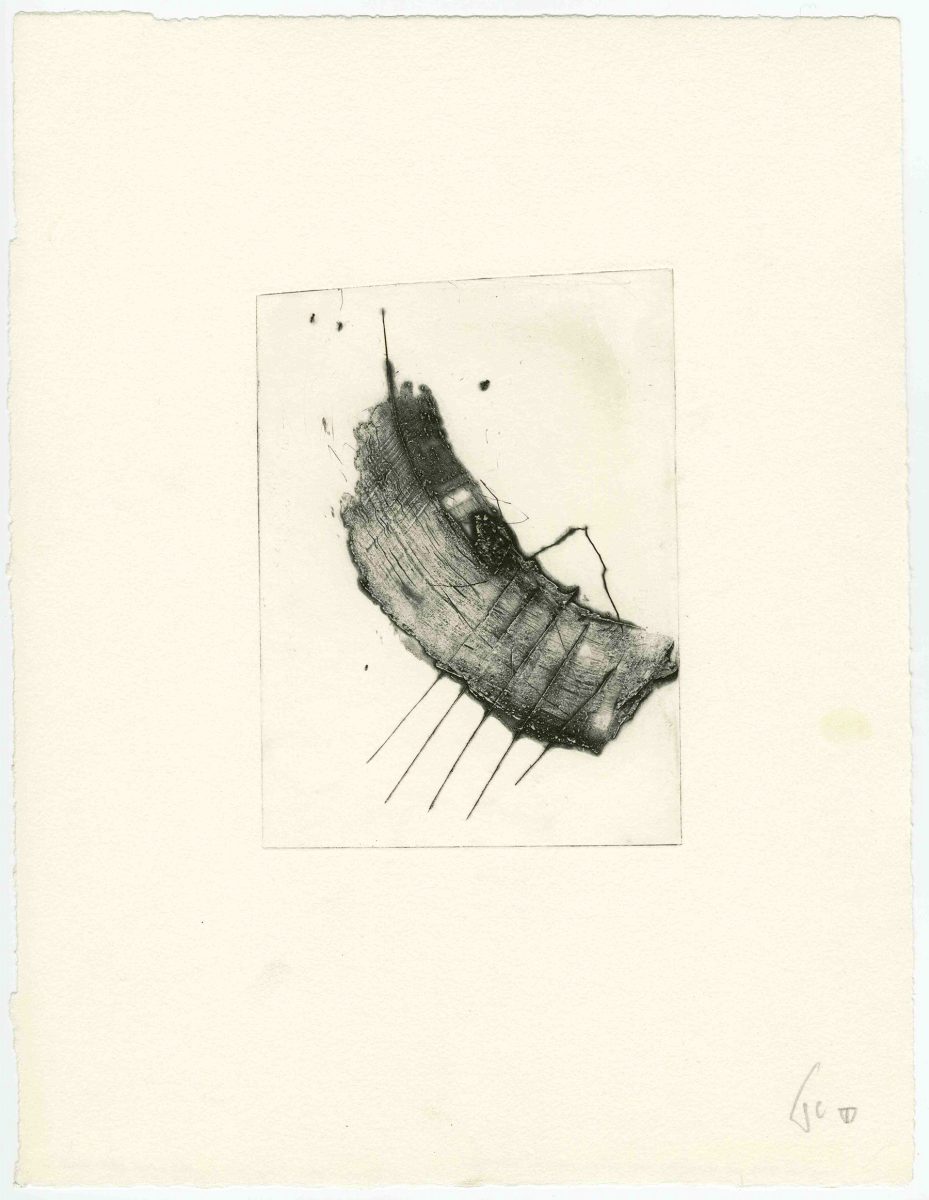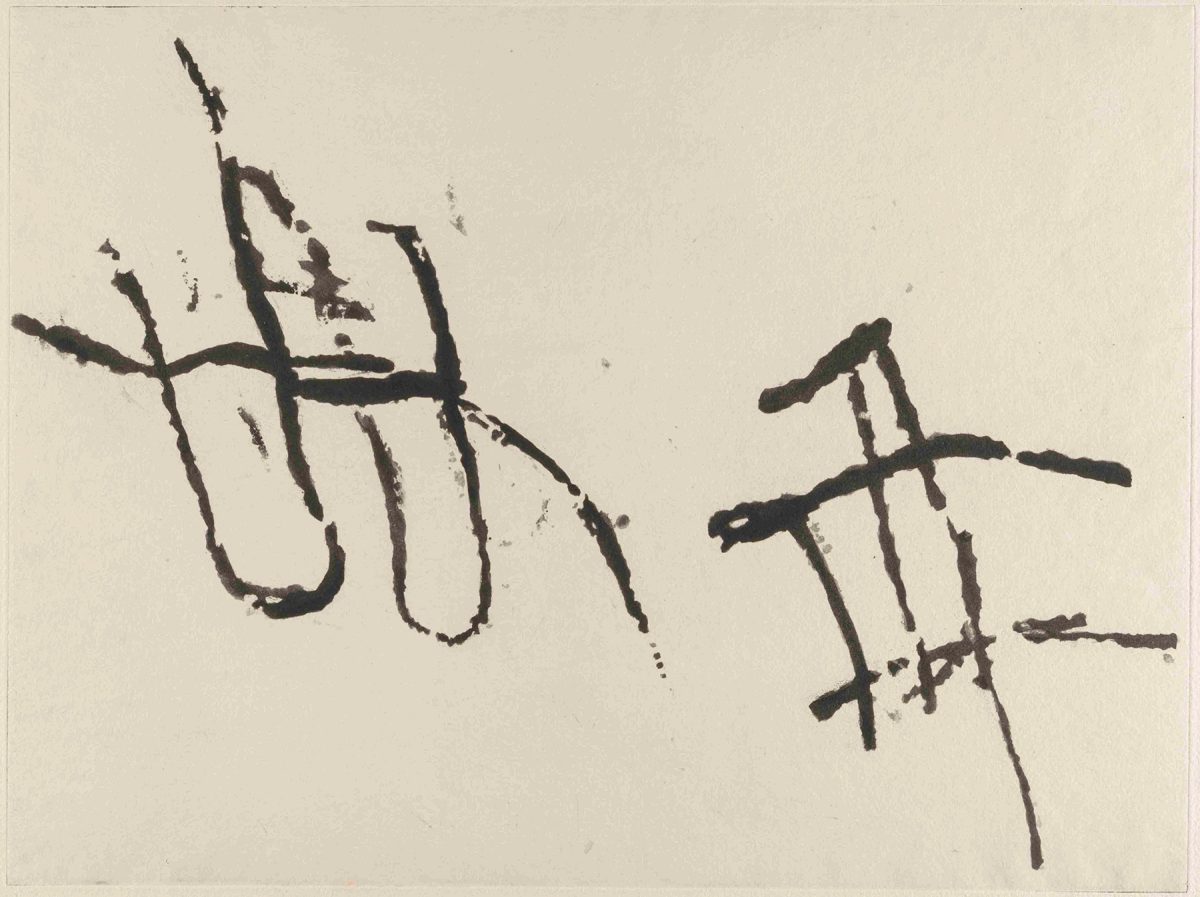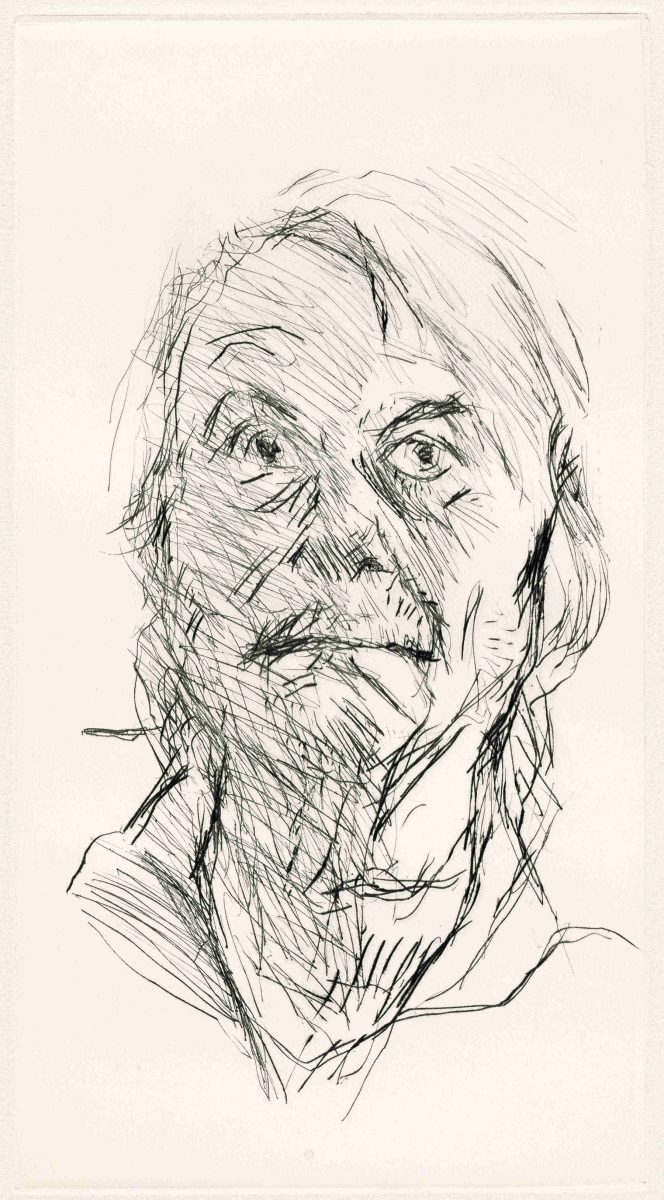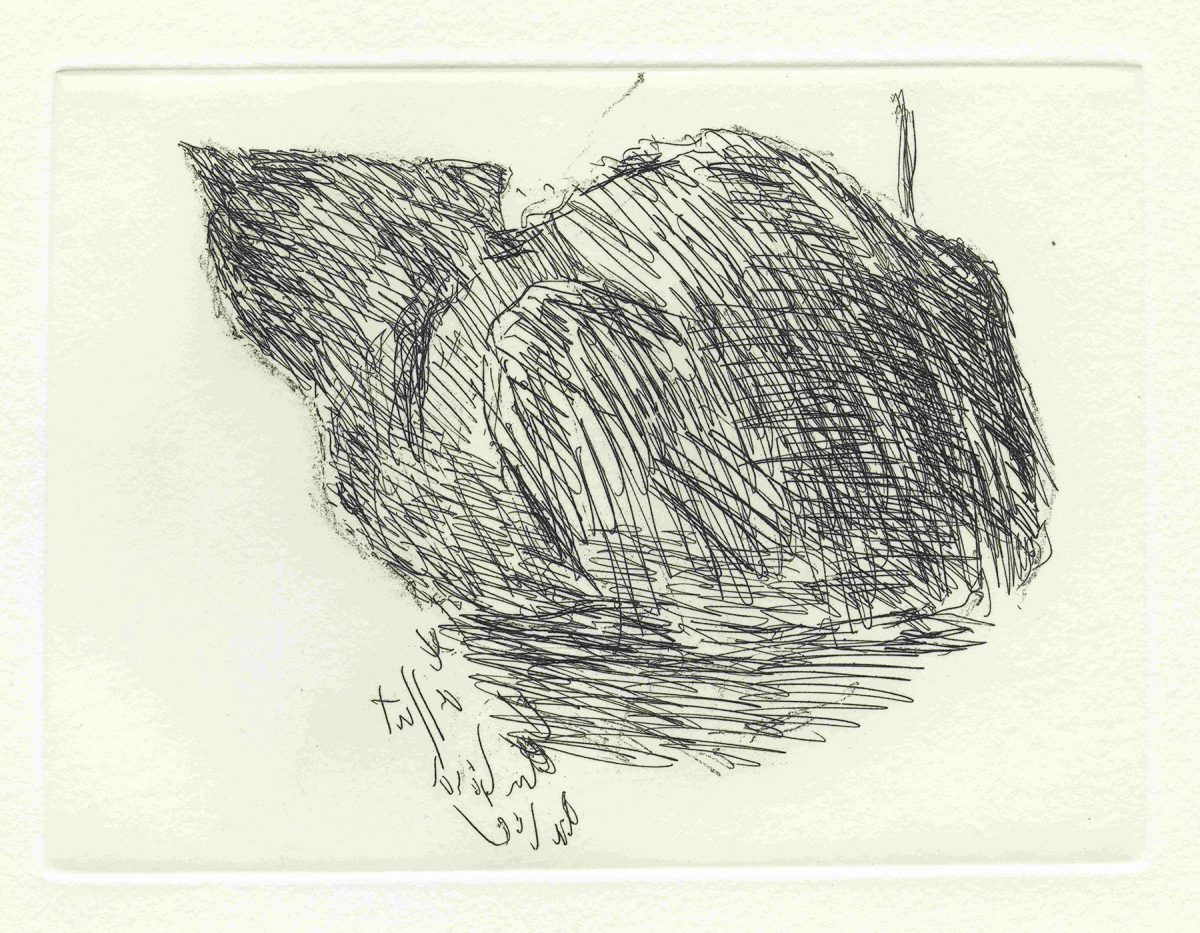From the early 1970s onwards, the French painter-printmaker Pierre Tal Coat made several stays at the Atelier de Saint-Prex, where Pietro Sarto and his team welcomed him and taught him technical skills that deepened his practice. Tal Coat made several important works in various printmaking processes, including woodcut, drypoint, aquatint and lithography. These include his Almanach (published first in Geneva in 1971 by Jacques Benador, then in Lausanne in 1975 and 1978 by Françoise Simecek), as well as his Laisses and his Sous le linteau en forme de joug (1978), which contain texts by his friend the poet André du Bouchet. This stimulating and inventive artist brought fresh air to the Atelier, not only through his independent thinking and brilliant conversation, but also his friendly attention to the younger artists who were active in the studio.
Pierre Jacob, who in 1926 adopted the pseudonym Tal Coat ("wood forehead" in Breton) to distinguish himself from the poet Max Jacob, was born in 1905 in Clohars-Carnoët, in Finistère. The son of a fisherman killed in the First World War, Tal Coat moved from job to job during his youth while teaching himself to paint. He arrived in Paris in 1924 and began exhibiting at the Fabre gallery in 1926. His early work, which was openly figurative, was influenced by various modernist movements, such as Fauvism, Cubism and Expressionism. He would make several important encounters in the 1930s, including with Francis Gruber, Alberto Giacometti and Gertrude Stein. The artist became known in avant-garde circles, and his work was shown at New York’s Julian Levy Gallery in 1938. His painting was marked by the troubles of his day—a series titled Massacres, for instance, was inspired by the Spanish Civil War. Mobilised in 1939, then demobilised in July 1940, Tal Coat settled in Aix-en-Provence, where many artists and writers had taken refuge from the Second World War. Three years later, he moved to the Château Noir, at the foot of the Sainte Victoire Mountain - the very spot where Cézanne used to paint. In Provence, Tal Coat's work underwent a full transformation: his palette became at once more fluid and more restrained, and his figures evaporated into a formalism that seemed to synthesize and essentialize the visible realm. Tal Coat would pursue this new mode of painting unceasingly over the following decades. He began exhibiting at the Galerie Maeght in 1954, and he was chosen to represent France at the 1956 Venice Biennale. In 1961, he moved to Saint-Pierre-de-Bailleul, in the Normandy countryside, where he worked until his death in 1985.
